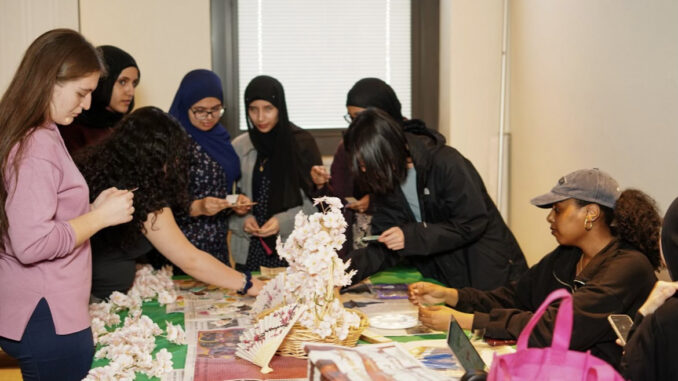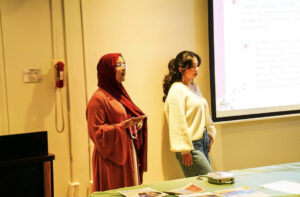
By Victoria Keraj
A Brooklyn College cherry blossom festival was held on April 1 as a joint celebration between Brooklyn College AANAPISI Project (BCAP), The Asian Pacific Islander Organization/Club Alliance (TAPIOCA), the BC Sustainability Club, the Women’s Center, and the BC School of Natural and Behavioral Sciences.
The event began with a presentation by TAPIOCA that shared the significance of the cherry blossoms in the different cultures where they are celebrated. In Japan, cherry blossoms “represent the coming of spring, hope, and renewal.” In South Korea, where cherry blossom trees were planted by Japanese soldiers during WWII, the flowers are a “symbol of purity and beauty.” In China, they may represent feminine power, beauty, and independence. In Scotland, the blooming of the trees marks the arrival of spring. In America, the tradition of celebrating the natural beauty of the blossoms began in 1912 when 3,000 cherry trees were sent by Japan to be planted in Washington D.C. as a symbol of cultural exchange.
Nicole Ruiz, an attendee and BC student, said she came to the event after learning about it through BCAP.
“I visit [BCAP] a lot. I kinda just found out about their group, and I was just interested in kinda being a part of their community,” she said.

TAPIOCA’s presentation was followed up by one created by BC professor Anna Petrovicheva, who discussed the different types of trees on BC’s campus and how to identify them. She mentioned the various kinds of cherry trees one could find on campus, such as the Higan cherry tree, which can be identified by its weeping, swinging branches and reddish cuts in its bark.
She also shared how to press leaves onto paper to create a print of the leaf’s design. A tip she shared was to keep the prints out of the sun to preserve the color for longer.
The BC Sustainability Club was also there to share upcoming events the club was hosting, such as their sustainability fair on April 22 and waste audit on the 24.
Edona Zuka, a BC student, said she enjoyed getting more resources and learning more about the earth science major at BC.
When asked about what interested her to come to the event, Zuka stated, “I was interested in how they would interpret the cherry blossoms and they interpreted it by making a presentation based on the trees in the school.”
After the presentation, students could enjoy food, tea, and bookmark making. Students who came to the event were able to learn more about the cultural significance of the cherry blossoms and how to identify them in nature. Students enjoyed company, food, and learning in this celebration of the cherry blossom’s natural beauty.
